America’s War against the People of Korea: The Historical Record of US War Crimes
The following text by Michel Chossudovsky was presented in Seoul, South Korea in the context of the Korea Armistice Day Commemoration, 27 July 2013
A Message for Peace. Towards a Peace Agreement and the Withdrawal of US Troops from Korea.
Introduction
Armistice Day, 27 July 1953 is day of Remembrance for the people of Korea.
It is a landmark date in the historical struggle for national reunification and sovereignty.
I am privileged to have this opportunity of participating in the 60th anniversary commemoration of Armistice Day on July 27, 2013.
I am much indebted to the “Anti-War, Peace Actualized, People Action” movement for this opportunity to contribute to the debate on peace and reunification.
An armistice is an agreement by the warring parties to stop fighting. It does signify the end of war.
What underlies the 1953 Armistice Agreement is that one of the warring parties, namely the US has consistently threatened to wage war on the DPRK for the last 60 years.
The US has on countless occasions violated the Armistice Agreement. It has remained on a war footing. Casually ignored by the Western media and the international community, the US has actively deployed nuclear weapons targeted at North Korea for more than half a century in violation of article 13b) of the Armistice agreement.
The armistice remains in force. The US is still at war with Korea. It is not a peace treaty, a peace agreement was never signed.
The US has used the Armistice agreement to
justify the presence of 37,000 American troops on Korean soil under a bogus
United Nations mandate, as well as establish an environment of continuous and
ongoing military threats. This situation of “latent warfare” has lasted for the
last 60 years. It is important to emphasize that this US garrison in South Korea
is the only U.S. military presence based permanently on the Asian continent.
Our objective in this venue is to call for a
far-reaching peace treaty, which will not only render the armistice agreement
signed on July 27, 1953 null and void, but will also lay the foundations for
the speedy withdrawal of US troops from Korea as well as lay the foundations
for the reunification of the Korean nation.
Armistice Day in a Broader Historical
Perspective.
This commemoration is particularly significant
in view of mounting US threats directed not only against Korea, but also
against China and Russia as part of Washington’s “Asia Pivot”, not to mention
the illegal occupation of Afghanistan and Iraq, the US-NATO wars against Libya
and Syria, the military threats directed against Iran, the longstanding
struggle of the Palestinian people against Israel, the US sponsored wars and
insurrections in sub-Saharan Africa.
Armistice Day July 27, 1953, is a significant
landmark in the history of US led wars. Under the Truman Doctrine
formulated in the late 1940s, the Korean War (1950-1953) had set the stage for
a global process of militarization and US led wars. “Peace-making” in terms of
a peace agreement is in direct contradiction with Washington “war-making”
agenda.
Washington has formulated a global military
agenda. In the words of four star General Wesley Clark(Ret)
[image right], quoting a senior Pentagon official:
“We’re going to take out seven countries in 5
years, starting with Iraq, and then Syria, Lebanon, Libya, Somalia, Sudan and,
finishing off, Iran” (Democracy Now March 2, 2007)
The Korean War (1950-1953) was the first major
military operation undertaken by the US in the wake of World War
II, launched at the very outset of what was euphemistically called
“The Cold War”. In many respects it was a continuation of World War II, whereby
Korean lands under Japanese colonial occupation were, from one day to the next,
handed over to a new colonial power, the United States of America.
At the Potsdam Conference
(July–August 1945), the US and the Soviet Union agreed to dividing Korea, along
the 38th parallel.
There was no “Liberation” of Korea following
the entry of US forces. Quite the opposite.
As we recall, a US military government was
established in South Korea on September 8, 1945, three weeks after the
surrender of Japan on August 15th 1945. Moreover, Japanese officials in
South Korea assisted the US Army Military Government (USAMG) (1945-48) led by
General Hodge in ensuring this transition. Japanese colonial administrators in
Seoul as well as their Korean police officials worked hand in glove with the
new colonial masters.
From the outset, the US military government
refused to recognize the provisional government of the People’s Republic of
Korea (PRK), which was committed to major social reforms including land
distribution, laws protecting the rights of workers, minimum wage legislation
and the reunification of North and South Korea.
The PRK was non-aligned with an anti-colonial
mandate, calling for the “establishment of close relations with the United
States, USSR, England, and China, and positive opposition to any foreign
influences interfering with the domestic affairs of the state.”2
The PRK was abolished by military decree in
September 1945 by the USAMG. There was no democracy, no liberation no
independence.
While Japan was treated as a defeated Empire,
South Korea was identified as a colonial territory to be administered under US
military rule and US occupation forces.
America’s handpicked appointee Sygman Rhee [left]
was flown into Seoul in October 1945, in General Douglas MacArthur’s personal
airplane.
The Korean War (1950-1953)
The crimes committed by the US against the
people of Korea in the course of the Korean War but also in its aftermath are
unprecedented in modern history.
Moreover, it is important to understand that
these US sponsored crimes against humanity committed in the 1950s have, over
the years, contributed to setting “a pattern of killings” and US human rights
violations in different parts of the World.
The Korean War was also characterised by a
practice of targeted assassinations of political dissidents, which was
subsequently implemented by the CIA in numerous countries including Indonesia,
Vietnam, Argentina, Guatemala, El Salvador, Afghanistan, Iraq.
Invariably these targeted killings were
committed on the instructions of the CIA and carried out by a US sponsored
proxy government or military dictatorship. More recently, targeted
assassinations of civilians, “legalised” by the US Congress have become, so to
speak, the “New Normal”.
According to I.F. Stone’s “Hidden History of the Korean War” first published in 1952 (at
the height of the Korean War), the US deliberately sought a pretext, an act of
deception, which incited the North to cross the 38th parallel ultimately
leading to all out war.
“[I. F. Stone's book] raised questions about
the origin of the Korean War, made a case that the United States government
manipulated the United Nations, and gave evidence that the U.S. military and
South Korean oligarchy dragged out the war by sabotaging the peace talks, 3
In Stone’s account, General Douglas MacArthur
“did everything possible to avoid peace”.
US wars of aggression are waged under the
cloak of “self defence” and pre-emptive attacks. Echoing I. F. Stone’s
historical statement concerning General MacArthur, sixty years later US
president Barack Obama and his defence Secretary Chuck Hagel are also “doing. everything possible to avoid peace”.
This pattern of inciting the enemy “to fire
the first shot” is well established in US military doctrine. It pertains to
creating a “War Pretext Incident” which provides the aggressor to pretext to
intervene on the grounds of “Self- Defence”. It characterised the Japanese
attack on Pearl Harbor, Hawaii in 1941, triggered by deception and provocation
of which US officials had advanced knowledge. Pearl Harbor was the
justification for America’s entry into World War II.
The Tonkin Gulf Incident in August 1964 was
the pretext for the US to wage war on North Vietnam, following the adoption of
the Tonkin Gulf Resolution by the US Congress, which granted President Lyndon
B. Johnson the authority to wage war on Communist North Vietnam.
I. F. Stone’s analysis refutes “the standard
telling” … that the Korean War was an unprovoked aggression by the North
Koreans beginning on June 25, 1950, undertaken at the behest of the Soviet
Union to extend the Soviet sphere of influence to the whole of Korea,
completely surprising the South Koreans, the U.S., and the U.N.”:
But was it a surprise? Could an attack by
70,000 men using at least 70 tanks launched simultaneously at four different
points have been a surprise?
Stone gathers contemporary reports from South
Korean, U.S. and U.N. sources documenting what was known before June 25. The
head of the U.S. CIA, Rear Admiral Roscoe H. Hillenloetter, is reported to have
said on the record, “that American intelligence was aware that ‘conditions
existed in Korea that could have meant an invasion this week or next.’” (p.
2) Stone writes that “America’s leading military commentator, Hanson
Baldwin of the New York Times, a trusted confidant of the Pentagon, reported
that they [U.S. military documents] showed ‘a marked buildup by the North
Korean People’s Army along the 38th Parallel beginning in the early days of
June.’” (p. 4)
How and why did U.S. President Truman so
quickly decide by June 27 to commit the U.S. military to battle in South Korea?
Stone makes a strong case that there were those in the U.S. government and
military who saw a war in Korea and the resulting instability in East Asia as
in the U.S. national interest. 4
According to the editor of France’s Nouvel
Observateur Claude Bourdet:
“If Stone’s thesis corresponds to reality, we
are in the presence of the greatest swindle in the whole of military history…
not a question of a harmless fraud but of a terrible maneuver in which deception
is being consciously utilized to block peace at a time when it is possible.”5
In the words of renowned American writers Leo
Huberman and Paul Sweezy:
“….we have come to the conclusion that (South
Korean president) Syngman Rhee deliberately provoked the North Koreans in the
hope that they would retaliate by crossing the parallel in force. The
northerners fell neatly into the trap.” 6
On 25 June 1950, following the adoption of
UN Security Council Resolution 82, General Douglas MacArthur, who headed the US military
government in occupied Japan was appointed Commander in Chief of the so-called
United Nations Command (UNCOM). According to Bruce Cumings, the Korean War
“bore a strong resemblance to the air war against Imperial Japan in the second
world war and was often directed by the same US military leaders” including
generals Douglas MacArthur and Curtis Lemay.
US War Crimes against the People of Korea
Extensive crimes were committed by US forces
in the course of the Korean War (1950-1953). While nuclear weapons were
not used during the Korean War, what prevailed was the strategy of “mass
killings of civilians” which had been formulated during World War II. A policy
of killing innocent civilians was implemented through extensive air raids and
bombings of German cities by American and British forces in the last weeks of
World War II. In a bitter irony, military targets were safeguarded.
This unofficial doctrine of killing of
civilians under the pretext of targeting military objectives largely
characterised US military actions both in the course of the Korean war as well
as in its aftermath. According to Bruce Cummings:
On 12 August 1950, the USAF
dropped 625 tons of bombs on North Korea; two weeks later, the daily tonnage
increased to some 800 tons.U.S. warplanes dropped more napalm and bombs on
North Korea than they did during the whole Pacific campaign of World War II. 7
The territories North of the 38th
parallel were subjected to extensive carpet bombing, which resulted in the
destruction of 78 cities and thousands of villages:
“What was indelible about it [the Korean War
of 1950-53] was the extraordinary destructiveness of the United States’ air
campaigns against North Korea, from the widespread and continuous use of
firebombing (mainly with napalm), to threats to use nuclear and chemical
weapons, and the destruction of huge North Korean dams in the final stages of
the war. ….
As a result, almost every substantial building
in North Korea was destroyed. …. 8
US Major General
William F Dean “reported that most of the North Korean cities and villages he
saw were either rubble or snow-covered wastelands”
General Curtis LeMay [left] who coordinated
the bombing raids against North Korea brazenly acknowledged that:
“Over a period of three years or so we killed
off – what – twenty percent of the population. … We burned down every town in
North Korea and South Korea, too”. 9
According to Brian Willson:
It is now believed that the population north
of the imposed 38th Parallel lost nearly a third its population of 8 – 9
million people during the 37-month long “hot” war, 1950 – 1953, perhaps an
unprecedented percentage of mortality suffered by one nation due to the
belligerence of another.” 10
Translation: the city of Pyongyang was totally destroyed in 1951 during
the Korean war
Extensive war crimes were also committed by US
forces in South Korea as documented by the Korea Truth and Reconciliation
Commission. According to ROK sources, almost one million civilians were killed
in South Korea in the course of the Korean War:
“In the early days of the Korean War, other
American officers observed, photographed and confidentially reported on such
wholesale executions by their South Korean ally, a secretive slaughter
believed to have killed 100,000 or more leftists and supposed sympathizers,
usually without charge or trial, in a few weeks in mid-1950.” 11
During The Second World War, the United
Kingdom lost 0.94% of its population, France lost 1.35%, China lost 1.89% and
the US lost 0.32%. During the Korean War, the DPRK lost more than 25% of
its population. The population of North Korea was of the order of 8-9 million
in 1950 prior the Korean War. US sources acknowledge 1.55 million
civilian deaths in North Korea, 215,000 combat deaths. MIA/POW
120,000, 300,000 combat troops wounded. 12
South Korean military sources
estimate the number of civilian deaths/wounded/missing at 2.5 million, of
which some 990,900 are in South Korea. Another estimate places Korea War total
deaths, civilian plus combat at 3.5 million.)
North Korea: A Threat to Global Security?
For the last 60 years, Washington has
contributed to the political isolation of North Korea. It has sought to
destabilize its national economy, including its industrial base and
agriculture. It has relentlessly undermined the process of reunification of the
Korean nation.
In South Korea, the US has maintained its
stranglehold over the entire political system. It has ensured from the initial
appointment of Sygman Rhee the instatement of non-democratic and repressive forms
of government which have in large part served the interests of the U.S.
US military presence in South Korea has also
exerted a controlling influence on economic and monetary policy.
An important question for the American people.
How can a country which has lost a quarter of its population resulting from US
aggression, constitute a threat to the American Homeland?
How can a country which has 37,000 US troops
on its immediate border constitute a threat to America?
Given the history war crimes, how do the people
of North Korea perceive the US threat to their Homeland. There is not a single
family in North Korea which has not lost a loved one in the course of the
Korean War.
The Korean War was the first major US led war
carried out in the immediate wake of World War II.
While the US and its NATO allies have waged
numerous wars and military interventions in all major regions of the World in
the course of what is euphemistically called the “post War era”, resulting in
millions of civilians deaths, America is upheld as the guardian of democracy
and World Peace.
War Propaganda
The Lie becomes the Truth.
Realities are turned upside down.
History is rewritten. North Korea is heralded
as a threat.
America is not the aggressor nation but “the
victim” of aggression.
These concepts are part of war propaganda
which is fed into the news chain.
Since the end of the Korean War, US led
propaganda –funnelled into the ROK news chain– has relentlessly contributed to
fomenting conflict and divisiveness between North and South Korea, presenting
the DPRK as a threat to ROK national security.
An atmosphere of fear and intimidation
prevails which impels people in South Korea to accept the “peace-making role”
of the United States. In the eyes of public opinion, the presence of
37,000 US occupation forces is viewed as “necessary” to the security of the
ROK.
US military presence is heralded as a means to
“protecting the ROK” against North Korean aggression. Similarly, the propaganda
campaign will seek to create divisions within Korean society with a view to
sustaining the legitimacy of US interventionism. The purpose of this
process is create divisiveness. Repeated ad nauseam, the alleged “North Korean
threat” undermines –within people’s inner consciousness– the notion that Korea is
one country, one nation, one history.
The “Truman Doctrine”
Historically, in the wake of World War II, the
Truman doctrine first formulated by Foreign Policy adviser George F. Kennan in a 1948 State Department
brief established the Cold War framework of US expansionism:
What this 1948 document conveys is continuity
in US foreign policy, from “Containment” during the Cold War era to
“Pre-emptive” War. It states in polite terms that the US should seek economic
and strategic dominance through military means:
Furthermore, we have about 50% of the world’s
wealth but only 6.3% of its population. This disparity is particularly great as
between ourselves and the peoples of Asia. In this situation, we cannot fail to
be the object of envy and resentment. Our real task in the coming period is to
devise a pattern of relationships which will permit us to maintain this
position of disparity without positive detriment to our national
security. To do so, we will have to dispense with all sentimentality
and day-dreaming; and our attention will have to be concentrated everywhere on
our immediate national objectives. We need not deceive ourselves that we can
afford today the luxury of altruism and world-benefaction. (…)
In the face of this situation we would be
better off to dispense now with a number of the concepts which have underlined
our thinking with regard to the Far East. We should dispense with the
aspiration to “be liked” or to be regarded as the repository of a high-minded
international altruism. We should stop putting ourselves in the position of
being our brothers’ keeper and refrain from offering moral and ideological
advice. We should cease to talk about vague and—for the Far East—unreal
objectives such as human rights, the raising of the living standards, and
democratization. The day is not far off when we are going to have to deal in
straight power concepts. The less we are then hampered by idealistic slogans,
the better. 13
The planned disintegration of the United
Nations system as an independent and influential international body has been on
the drawing board of US foreign policy since the inception of the United
Nations in 1946. Its planned demise was an integral part of the Truman doctrine
as defined in 1948. From the very inception of the UN, Washington has sought on
the one hand to control it to its advantage, while also seeking to weakening
and ultimately destroy the UN system. In the words of George Kennan:
“Occasionally, it [the United Nations] has
served a useful purpose. But by and large it has created more problems than it
has solved, and has led to a considerable dispersal of our diplomatic effort.
And in our efforts to use the UN majority for major political purposes we are
playing with a dangerous weapon which may some day turn against us. This
is a situation which warrants most careful study and foresight on our part.
In our efforts to use the UN majority for
major political purposes we are playing with a dangerous weapon which may some
day turn against us. This is a situation which warrants most careful study and
foresight on our part. 14
Although officially committed to the
“international community”, Washington has largely played lip service to the
United Nations. In recent years it has sought to undermine it as an
institution. Since Gulf War I, the UN has largely acted as a rubber stamp. It
has closed its eyes to US war crimes, it has implemented so-called peacekeeping
operations on behalf of the Anglo-American invaders, in violation of the UN
Charter.
The Truman Doctrine Applied to Korea and East
Asia
The Truman doctrine was the culmination of a
post World War II US military strategy initiated with the nuclear bombing of
Hiroshima and Nagasaki in August 1945 and the surrender of Japan. [Harry Truman
left]
In East Asia it consisted in the post-war
occupation of Japan as well the US takeover of Japan’s colonial Empire
including South Korea (Korea was annexed to Japan under the 1910 Japan–Korea
Annexation Treaty).
Following Imperial Japan’s defeat in World War
II, a US sphere of influence throughout East and South East Asia was
established in the territories of Japan’s “Great East Asia Co-Prosperity
Sphere”.
The US sphere of influence included
Philippines (a US possession occupied by Japan during World War II), Thailand
(a Japanese protectorate during World War II), Indonesia (Occupied by Japan
during World War II, becomes a US proxy State following the establishment of
the Suharto military dictatorship in 1965). This US sphere of influence in Asia
also extended its grip into France’s former colonial possessions in Indochina,
including Vietnam, Laos and Cambodia, which were under Japanese military
occupation during World War II.
America’s hegemony in Asia was largely based
on establishing a sphere of influence in countries which were under the
colonial jurisdiction of Japan, France and the Netherlands.
Continuity: From the Truman Doctrine to the
Neo-Conservatives
The Neo-conservative agenda under the Bush
administration should be viewed as the culmination of a (bipartisan) “Post War”
foreign policy framework, which provides the basis for the planning of the
contemporary wars and atrocities including the setting up of torture chambers,
concentration camps and the extensive use of prohibited weapons directed
against civilians.
From Korea, Vietnam and Afghanistan, to the
CIA sponsored military coups in Latin America and Southeast Asia, the objective
has been to ensure US military hegemony and global economic domination, as
initially formulated under the “Truman Doctrine”. Despite significant policy
differences, successive Democratic and Republican administrations, over a span
of more than sixty years, from Harry Truman to Barack Obama have carried out
this global military agenda.
US War Crimes and Atrocities
What we are dealing with is a criminal US
foreign policy agenda. Criminalization does not pertain to one or more heads of
State. It pertains to the entire State system, it’s various civilian and
military institutions as well as the powerful corporate interests behind the
formulation of US foreign policy, the Washington think tanks, the creditor
institutions which finance the military machine.
Starting with the Korean War in 1950 and
extending to the wars in the Middle East and Central Asia, this period is
marked by extensive war crimes resulting in the death of more than ten million
people. This figure does not include those who perished as a result of poverty,
starvation and disease.
War crimes are the result of the
criminalization of the US State and foreign policy apparatus. We are not solely
dealing specifically with individual war criminals, but with a process
involving decision makers acting at different level, with a mandate to carry
out war crimes, following established guidelines and procedures.
What distinguishes the Bush and Obama
administrations in relation to the historical record of US sponsored crimes and
atrocities, is that the concentration camps, targeted assassinations and
torture chambers are now openly considered as legitimate forms of intervention,
which sustain “the global war on terrorism” and support the spread of Western
democracy.
Historical Significance of the Korean War:
America’s Project of Global Warfare
The Korean War had set the stage for
subsequent US military interventions. It was an initial phase of a post-World
War II “military roadmap” of US led wars, special operations, coups d’etat,
covert operations, US sponsored insurgencies and regime change spanning over of
more than half a century. The project of global warfare has been carried out in
all major regions of the World, through the US military’s geographic command
structure, not to mention the CIA’s covert operations geared toward toppling
sovereign governments.
This project of Worldwide conquest was
initially established under the so-called “Truman Doctrine”. The latter initiated
what the Pentagon later (in the wake of the Cold war under the
NeoConservatives) entitled America`s “Long War”.
What we are dealing with is global warfare, a
Worldwide process of conquest, militarization and corporate expansionism. The
latter is the driving force. “Economic conquest” is implemented through the
support of concurrent intelligence and military operations. Financial and
monetary destabilization is another mechanism of economic warfare directed
against sovereign countries.
In 2000, preceding the eleciton of George W.
Bush to the White House, The Project for a New American Century (PNAC), A
Washington Neoconservative think tank had stipulated four core missions
for the US military:
·
“defend the American
homeland;
·
fight and decisively
win multiple, simultaneous major theater wars;
·
perform the
“constabulary” duties associated with shaping the security environment in
critical regions;
·
transform U.S. forces
to exploit the “revolution in military affairs;”
George W. Bush’s Deputy Defense Secretary Paul
Wolfowitz, his Defense Secretary Donald Rumsfeld and Vice President Dick Cheney
had commissioned the PNAC blueprint prior to the 2000 presidential elections.
The PNAC outlines a roadmap of conquest.
It calls for “the direct imposition of U.S.
“forward bases” throughout Central Asia and the Middle East: “with a view to
ensuring economic domination of the world, while strangling any potential
“rival” or any viable alternative to America’s vision of a ‘free market’
economy”
Distinct from theater wars, the so-called
“constabulary functions” imply a form of global military policing using various
instruments of military intervention including punitive bombings and the
sending in of US Special Forces, etc. Constabulary functions were contemplated
in the first phase of US war plans against Iran. They were identified as ad hoc
military interventions which could be applied as an “alternative” to so-called
theater wars.
This document had no pretence: its objectives
were strictly military. No discussion of America’s role in peace-keeping or the
spread of democracy. 15 The main PNAC document is entitled Rebuilding America`s
Defenses, Strategy, Forces and Resources for a New Century.(The PNAC
website is: http://www.newamericancentury.org)
US Military Occupation of South Korea, The
Militarization of East Asia
Washington is intent upon creating political
divisions in East Asia not only between the ROK and the DPRK but between North
Korea and China, with a view to ultimately isolating the DPRK. In a bitter
irony, US military facilities in the ROK are being used to threaten China as
part of a process of military encirclement. In turn, Washington has sought to
create political divisions between countries as well fomenting wars between
neighboring countries (e.g. the Iran-Iraq war in the 1980s, the confrontation
between India and Pakistan).
The UN Command Mandate (UNC)
Sixty years later under a bogus UN mandate,
the military occupation by US forces of South Korea prevails. It is worth noting that the UN never formally created a United
Nations Command. The designation was adopted by the US without a formal
decision by the UN Security Council. In 1994, the UN Secretary
General Boutros Boutros Ghali clarified in a letter to the North Korean Foreign
Minister that “the Security Council did not establish the unified command as a
subsidiary organ under its control, but merely recommended [in 1950] the creation
of such a command, specifying that it be under the authority of the United
States”
Republic of Korea – United States Combined
Forces Command (CFC)
South Korea is still under military occupation
by US forces. In the wake of the Korean War and the signing of the Armistice
agreement, the national forces of the ROK were placed under the jurisdiction of
the so-called UN Command. This arrangement implied that all units of the Korean
military were de facto under the control of US commanders. In 1978 a binational
Republic of Korea – United States Combined Forces Command (CFC), was created,
headed by a US General. In substance, this was a change in labels in relation
to the so-called UN Command. To this date, Korean forces remain under the
command of a US general.
The CFC was originally to be dismantled when
the U.S. hands back wartime operational control of South Korean troops to Seoul
in 2015, but there were fears here that this could weaken South Korea’s
defenses. The change of heart comes amid increasingly belligerent rhetoric from
North Korea.
Park told her military brass at the briefing
to launch “immediate and strong counterattacks” against any North Korean
provocation. She said she considers the North’s threats “very serious,” and
added, “If any provocations against our people and country ake place, the
military has to respond quickly and strongly without any political
consideration.” 16
United States Forces Korea (USFK)
United States Forces Korea (USFK) was
established in 1957. It is described as “as a subordinate-unified command of
U.S. Pacific Command (USPACOM)”, which could be deployed to attack third
countries in the region including Russia and China. There are officially 28,500
US troops under the jurisdiction of USFK. Recent figures of the US Department
of Defense confirm that 37,000 US troops under USFK are currently (April 2013)
stationed in South Korea.
USFK integrated by US forces is distinct from
the Combined Forces Command (CFC) created in 1978. The CFC is commanded by a
four-star U.S. general, with a four-star ROK Army general as deputy
commander.17 (See United States Forces
Korea | Mission of the ROK/US Combined Forces Command).
The current USFK commander is General James D. Thurman (See CFC photo op below)
who also also assumes the position of CFC Commander and UNC Commander. 18
(See United States Forces
Korea | USFK Leadership).
General Thurman who takes his orders from the
Pentagon overrides ROK president and Commander in Chief Park Geun Hye.
Regular active troops of the ROK Armed Forces
(Army, Navy and Air Force) theoretically under national ROK command consist of
more 600,000 active personnel and more than 2 million reservists. According to
the terms of the CFC, however, these troops are de facto under the CFC command
which is headed by a US General.
What this means is that in addition to the
37,000 US troops of the USFK, the US command structure has de facto control
over all operational units of the Korean Armed Forces. In essence, what this
means is that the ROK does not control its armed forces. ROK armed forces
essentially serve the interests of a foreign power.
President Park Geun-hye (center), Combined
Forces Command commander Gen. James D. Thurman (second from left, back row),
deputy CFC commander Gen. Kwon Oh-sung (second from right, back row) and allied
troops. Source Korean Herald, 28 August 2013
Annually the US-ROK conducts war games
directed against North Korea. These war games –which simulate a conventional
and/or nuclear attack against North Korea– are often conducted in late July
coinciding with Armistice Day.
In turn, US military bases along South Korea’s
Western coastline and on Jeju island are used to threaten China as part of a
process of military encirclement. In view of the ROK-US agreement under the
CFC, South Korean troops under US command are deployed in the context of US
military operations in the region, which are actively coordinated with USFK and
USPACOM.
South Korea is multibillion bonanza for
America’s weapons industry. In the course of the last 4 years the ROK ranked
the fourth largest arms importer in the World “with the U.S. accounting for 77
percent of its arms purchases.” It should be noted that these weapons are
purchased with Korean tax payers’ wons, they are de facto under the supervision
of the US military, namely the CFC Joint Command which is headed by a US
General.
In recent developments, the ROK president has
hinted towards the possibility of pre-emptive strikes against North Korea.
“As commander-in-chief of the armed forces, I
will trust the military’s judgment on abrupt and surprise provocations by North
Korea as it is the one that directly faces off against the North,” Park
said, according to the London
Telegraph. “Please carry out your duty of guarding the safety of the people
without being distracted at all.”
Park’s defense minister also promised an
“active deterrence” against Pyongyang and seemed to suggest Seoul would
consider carrying out preemptive strikes on North Korean nuclear and missile
sites. 19
The Korea Nuclear Issue. Who Threatens Whom?
Historical Background: Hiroshima and Nagasaki:
August 6 and 9, 1945
America’s early nuclear weapons doctrine under
the Manhattan Project was not based on the Cold War notions of “Deterrence” and
“Mutually Assured Destruction” (MAD).
US nuclear doctrine pertaining to Korea was
established following the bombings of Hiroshima and Nagasaki in August 1945,
which were largely directed against civilians.
The strategic objective was to trigger a
“massive casualty producing event” resulting in tens of thousands of deaths.
The objective was to terrorize an entire nation, as a mean of military
conquest. Military targets were not the main objective: the notion of
“collateral damage” was used as a justification for the mass killing of
civilians, under the official pretence that Hiroshima was “a military base” and
that civilians were not the target.
In the words of president Harry Truman:
“We have discovered the most terrible bomb in
the history of the world. … This weapon is to be used against Japan … [We] will use it so that military objectives and soldiers and
sailors are the target and not women and children. Even if the
Japs are savages, ruthless, merciless and fanatic, we as the leader of the
world for the common welfare cannot drop that terrible bomb on the old capital
or the new. … The target will be a purely military one… It seems to be
the most terrible thing ever discovered, but it can be made the most useful.”
20 (President Harry S.
Truman, Diary, July 25, 1945)
“The World will note that the first atomic
bomb was dropped on Hiroshima a military base. That was because we wished in this first attack to avoid, insofar
as possible, the killing of civilians..” (President Harry S. Truman
in a radio speech to the Nation, August 9, 1945).
[Note: the first atomic bomb was dropped on
Hiroshima on August 6, 1945; the Second on Nagasaki, on August 9, on
the same day as Truman's radio speech to the Nation]
Nobody within the upper echelons of the US
government and military believed that Hiroshima was a military base, Truman was
lying to himself and to the American public. To this day the use of nuclear
weapons against Japan are justified as a necessary cost for bringing the war to
an end and ultimately “saving lives”.
The Hiroshima Doctrine applied to Korea: US
nuclear weapons stockpiled and deployed in South Korea
During the Korean War, the US had envisaged
the use of nuclear weapons against North Korea shortly after the Soviet Union
had tested its first atom bomb in August 29, 1949, about ten months prior
to the onset of the Korean War in June 1950. Inevitably, the possession of the
atom bomb by the Soviet Union acted as a deterrent against the use of nuclear
weapons by the US in the course of the Korean War.
In the immediate wake of the Korean War, there
was a turnaround in US nuclear weapons policy regarding North Korea. The use of
nukes weapons had been envisaged on a pre-emptive basis against the DPRK, on
the presumption that the Cold War nuclear powers, including China and the
Soviet Union would not intervene.
Barely a few years after the end of the Korean
War, the US initiated its deployment of nuclear warheads in South Korea. This
deployment in Uijongbu and Anyang-Ni had been envisaged as early as 1956.
It is worth noting that the US decision to
bring nuclear warheads to South Korea was in blatant violation of
Paragraph 13(d) of the Armistice Agreement which prohibited the warring
factions from introducing new weapons into Korea.
The actual deployment of nuclear warheads
started in January 1958, four and a half years after the end of the Korean War,
“with the introduction of five nuclear weapon systems: the Honest John
surface-to-surface missile, the Matador cruise missile, the Atomic-Demolition
Munition (ADM) nuclear landmine, and the 280-mm gun and 8-inch (203mm)
howitzer.” 21 (See The nuclear information project: US
Nuclear Weapons in Korea)
The Davy Crockett projectile was deployed in
South Korea between July 1962 and June 1968. The warhead had selective yields
up to 0.25 kilotons. The projectile weighed only 34.5 kg (76 lbs). Nuclear
bombs for fighter bombers arrived in March 1958, followed by three
surface-to-surface missile systems (Lacrosse, Davy Crockett, and Sergeant)
between July 1960 and September 1963. The dual-mission Nike Hercules anti-air
and surface-to-surface missile arrived in January 1961, and finally the 155-mm
Howitzer arrived in October 1964. At the peak of this build-up, nearly 950
warheads were deployed in South Korea.
Four of the weapon types only remained
deployed for a few years, while the others stayed for decades. The 8-inch
Howitzer stayed until late 1991, the only of the weapon to be deployed throughout
the entire 33-year period of U.S. nuclear weapons deployment to South Korea.
The other weapons that stayed till the end were the air delivered bombs
(several different bomb types were deployed over the years, ending with the
B61) and the 155-mm Howitzer nuclear artillery.22
Officially the US deployment of nuclear
weapons in South Korea lasted for 33 years. The deployment was targeted against
North Korea as well China and the Soviet Union.
South Korea’s Nuclear Weapons Program
Concurrent and in coordination with the US
deployment of nuclear warheads in South Korea, the ROK had initiated its own
nuclear weapons program in the early 1970s. The official story is that the US
exerted pressure on Seoul to abandon their nuclear weapons program and “sign the
Treaty on the Non-Proliferation of Nuclear Weapons (NPT) in April 1975 before
it had produced any fissile material.” 23
The fact of the matter is that the ROK’s
nuclear initiative was from the outset in the early 1970s under the
supervision of the US and was developed as a component part of the US
deployment of nuclear weapons, with a view to threatening North Korea.
Moreover, while this program was officially
ended in 1978, the US promoted scientific expertise as well as training of the
ROK military in the use of nuclear weapons. And bear in mind: under the ROK-US
CFC agreement, all operational units of the ROK are under joint command headed
by a US General. This means that all the military facilities and bases
established by the Korean military are de facto joint facilities. There are a
total of 27 US military facilities in the ROK 24
The Official Removal of Nuclear Weapons from
South Korea
According to military sources, the removal of
nuclear weapons from South Korea was initiated in the mid 1970s:
The nuclear weapons storage site at Osan
Air base was deactivated in late 1977. This reduction continued over the
following years and resulted in the number of nuclear weapons in South Korea
dropping from some 540 in 1976 to approximately 150 artillery shells and bombs
in 1985. By the time of the Presidential Nuclear Initiative in 1991, roughly
100 warheads remained, all of which had been withdrawn by December 1991. 25
According to official statements, the US
withdrew its nuclear weapons from South Korea in December 1991.
The Planning of Nuclear Attacks against North
Korea from the Continental US and from Strategic US Submarines
This withdrawal from Korea did not in any way
modify the threat of nuclear war directed against the DPRK. On the contrary: it
was tied to changes in US military strategy with regard to the deployment of
nuclear warheads. Major North Korean cities were to be targeted with nuclear
warheads from US continental locations and from US strategic submarines
(SSBN) rather than military facilities in South Korea:
After the withdrawal of [US] nuclear weapons
from South Korea in December 1991, the 4th Fighter Wing at Seymour
Johnson Air Force Base has been tasked with nuclear strike planning against
North Korea. Since then, strike planning against North Korea with non-strategic
nuclear weapons has been the responsibility of fighter wings based in the
continental United States. One of these is the 4th Fighter Wing
at Seymour Johnson Air Force Base in North Carolina. …
“We simulated fighting a war in Korea,
using a Korean scenario. … The scenario…simulated a decision by the
National Command Authority about considering using nuclear weapons….We
identified aircraft, crews, and [weapon] loaders to load up tactical nuclear
weapons onto our aircraft….
With a capability to strike targets in less
than 15 minutes, the Trident D5 sea-launched ballistic missile is a “mission
critical system” for U.S. Forces Korea. Ballistic Missile Submarines and
Long-Range Bombers
In addition to non-strategic air delivered
bombs, sea-launched ballistic missiles onboard strategic Ohio-class submarines
(SSBNs) patrolling in the Pacific appear also to have a mission against North
Korea. A DOD General Inspector report from 1998 listed the Trident system as a
“mission critical system” identified by U.S. Pacific Command and U.S. Forces
Korea as “being of particular importance to them.”
Although the primary mission of the Trident
system is directed against targets in Russia and China, a D5 missile launched
in a low-trajectory flight provides a unique very short notice (12-13 minutes)
strike capability against time-critical targets in North Korea. No other U.S. nuclear weapon system can
get a warhead on target that fast. Two-three SSBNs are on “hard alert” in the
Pacific at any given time, holding Russian, Chinese and North Korean targets at
risk from designated patrol areas.
Long-range strategic bombers may also be
assigned a nuclear strike role against North Korea although little specific is
known. An Air Force map (see below) suggests a B-2 strike role against North
Korea. As the designated carrier of the B61-11 earth penetrating nuclear bomb,
the B-2 is a strong candidate for potential nuclear
strike missions against North Korean deeply buried underground facilities.
As the designated carrier of the B61-11 earth penetrating nuclear bomb [with an
explosive capacity between one third and six times a Hiroshima bomb,see image
right above] and a possible future Robust Nuclear Earth Penetrator, the B-2 stealth bomber(below)could have an important role
against targets in North Korea. Recent upgrades enable planning of a new B-2
nuclear strike mission in less than 8 hours. 26
Whereas officially the US deployment of
nuclear weapons in South Korea lasted for 33 years, there is evidence that a
large number of nuclear warheads are still stockpiled in South Korea.
“Although the South Korean government at the
time confirmed the withdrawal, U.S. affirmations were not as clear. As a
result, rumors persisted for a long time — particularly in North and South
Korea — that nuclear weapons remained in South Korea. Yet the withdrawal was
confirmed by Pacific Command in 1998 in a declassified portion of the CINCPAC
Command History for 1991. 27 (The nuclear information project:
withdrawal of US nuclear weapons from South Korea,)
Recent reports have hinted to a remaining
stockpile of nuclear weapons in South Korea to be used on a pre-emptive basis
against North Korea. It is well understood that such an action would
engulf the entire Korean peninsula in an area of intense nuclear radiation.
The Bush Administration’s 2001 Nuclear Posture
Review: Pre-emptive Nuclear War.
The Bush administration in its 2001 Nuclear
Posture Review established the contours of a new post 9/11 “pre-emptive”
nuclear war doctrine, namely that nuclear weapons could be used as an
instrument of “self-defense” against non-nuclear states
“Requirements for U.S. nuclear strike
capabilities” directed against North Korea were established as part of a
Global Strike mission under the helm of US Strategic Command Headquarters
in Omaha Nebraska, the so-called CONPLAN 8022, which was directed against a
number of “rogue states” including North Korea as well as China and Russia:
On November 18, 2005, the new Space and Global
Strike command became operational at STRATCOM after passing testing in a
nuclear war exercise involving North Korea.
Current U.S. Nuclear strike planning against
North Korea appears to serve three roles: The first is a vaguely defined
traditional deterrence role intended to influence North Korean behavior prior
to hostilities.
This role was broadened somewhat by the 2001
Nuclear Posture Review to not only deter but also dissuade North Korea from
pursuing weapons of mass destruction.
Why, after five decades of confronting North
Korea with nuclear weapons, the Bush administration believes that additional
nuclear capabilities will somehow dissuade North Korea from pursuing weapons of
mass destruction [nuclear weapons program] is a mystery. 28
The Threat of Nuclear War. North Korea vs. the
United States.
While the Western media in chorus focus on the
North Korean nuclear threat, what prevails when reviewing Korean history is the
asymmetry of nuclear capabilities.
The fact that the US has been threatening
North Korea with nuclear war for over half a century is barely acknowledged by
the Western media.
Where is the threat?
The asymmetry of nuclear weapons capabilities
between the US and the DPRK must be emphasised,
According to ArmsControl.org (April
2013) the United States
“possesses 5,113 nuclear
warheads, including tactical, strategic, and non-deployed weapons.”
According to the latest official New START
declaration, out of more than 5113 nuclear weapons,
“the US deploys 1,654 strategic
nuclear warheads on 792 deployed ICBMs, SLBMs, and strategic
bombers… 29
Moreover, according to The Federation of
American Scientists the U.S. possesses 500 tactical nuclear warheads.
On April 3, 2013 the U.S. State Department
issued the latest fact sheet on its data exchange with Russia under New START,
sharing the numbers of deployed nuclear warheads and New START-accountable
delivery systems held by each country, 2. On May 3, 2010, the United States
Department of Defense released for the first time the total number of nuclear
warheads (5,113) in the U.S. stockpile. The Defense Department includes in this
stockpile active warheads which are operational and deployed or ready to be
deployed, and inactive warheads which are maintained “in a non-operational
status, and have their tritium bottle removed.” Sources: Arms Control
Association, Federation of American Scientists, International Panel on Fissile
Materials, U.S. Department of Defense, and U.S. Department of State).30
In contrast the DPRK, according to the
same source:
“has separated enough plutonium for roughly
4-8 nuclear warheads. North Korea unveiled a centrifuge facility in 2010, buts
ability to produce highly-enriched uranium for weapons remains unclear.” 31 (ArmsControl.org)
Morever, according to expert opinion:
“there is no evidence that North Korea has the
means to lob a nuclear-armed missile at the United States or anyone else. So
far, it has produced several atomic bombs and tested them, but it lacks the
fuel and the technology to miniaturize a nuke and place it on a missile” 32
According to Siegfried Hecker, one of America’s
preeminent nuclear scientists:
“Despite its recent threats, North Korea does not yet have much of a nuclear arsenal because it
lacks fissile materials and has limited nuclear testing experience,” 33
The threat of nuclear war does not emanate
from the the DPRK but from the US and its allies.
The Democratic People’s Republic of Korea, the
unspoken victim of US military aggression, has been incessantly portrayed as a
war mongering nation, a menace to the American Homeland and a “threat to
World peace”. These stylized accusations have become part of a media
consensus.
Meanwhile, Washington is now implementing a
$32 billion refurbishing of strategic nuclear weapons as well as a revamping of
its tactical nuclear weapons, which according to a 2002 Senate decision “are
harmless to the surrounding civilian population.”
These continuous threats and actions of latent
aggression directed against the DPRK should also be understood as part of the
broader US military agenda in East Asia, directed against China and Russia.
It is important that people across the land,
in the US, Western countries, come to realize that the United States rather
than North Korea or Iran is a threat to global security. [Obama at the DMZ
using the UN Flag in violation of the UN Security Council]
Obama together with President Park Geun
Hye at the DMZ
Korea’s Economic Development
The US military occupation of South Korea has
largely supported and protected US economic and financial interests in Korea.
From the very outset in 1945, there was no democratization of the South Korean
economy. The exploitative Japanese factory system was adopted by the Korean
business conglomerates, which were in part the outgrowth of the Japanese
imperial system.
At the outset this system was based on
extremely low wages, Korea’s manufacturing base was used to produce cheap labor
exports for Western markets, In many respects, the earlier Korean manufacturing
base was a form of “industrial colonialism” in derogation of the rights of
Korean workers.
The rise of the South Korean business
conglomerates (Chaebols) was the source of impressive economic growth
performance starting in the 1970s. The Chaebols are conglomerates of many
companies “clustered around one holding company”. The parent company is often
controlled by single family or business clan. The latter in turn had close ties
to officials in the ROK’s military governments.
South Korea’s industrial and technological
revolution constituted a challenge to Western capitalism. Despite US military
presence, the ROK was no longer a “developing country” with a “dependent”
economy. Inserted into a competitive World market, South Korean
capitalism was competing with both Japanese and Western multinationals.
The 1997 Asian Crisis: Financial Warfare
Directed against South Korea
The ROK had developed into a World capitalist
power. It had acquired its own technological base, a highly developed banking
system; it was categorised by the World Bank as a so-called “Asian tiger”.
Yet at the same time, the entire political
fabric –which included the conduct of macroeconomic policy– was controlled by
Washington and Wall Street, not to mention the military presence of US
occupation forces.
The Asian crisis of 1997 was an important
watershed. In late 1997, the imposition of an IMF bailout contributed to
plunging South Korea, virtually overnight, into a deep recession. The social
impact was devastating.
Through financial manipulation of stock
markets and foreign exchange markets by major financial actors, the Asian
crisis contributed to weakening and undermining the Korean business
establishment. The objective was to “tame the tiger”, dismantle the Korean
business conglomerates, and restore US control and ownership over the Korean
economy, its industrial base, its banking system.
The collapse of the won in late 1997 was
triggered by “naked short selling” on the foreign exchange markets. It was
tantamount to an act of economic warfare.
Several Korean business conglomerates were
fractured, broken up or precipitated into bankruptcy on the orders of the IMF,
which was acting on behalf of Wall Street.
Of the 30 largest chaebols, 11 collapsed
between July 1997 and June 1999.
Following the IMF’s December 1997
financial bailout, a large part of the Korean national economy, its high tech
sectors, its industrial base, was “stolen” by US and Western capital under
various fraudulent clauses negotiated by the ROK’s creditors.
Western corporations had gone on a shopping
spree, buying up financial institutions and industrial assets at rock-bottom
prices. The devaluation of the won, combined with the slide of the Seoul stock
market, had dramatically depressed the dollar value of Korean assets.
Acting directly on behalf of Wall Street, the
IMF had demanded the dismantling of the Daewoo Group including the sell-off of
the 12 so-called troubled Daewoo affiliate companies. Daewoo Motors was up for
grabs. This was not a spontaneous bankruptcy, it was the result of financial
manipulation, with a view to transferring valuable productive assets into the
hand of foreign investors. Daewoo obliged under the IMF agreement to sell off
Daewoo Motor to General Motors (GM) in 2001. Similarly, the ROK’s largest
corporation Hyundai was forced to restructure its holding company following the
December 1997 bailout.
In April 1999 Hyundai announced a two-thirds
reduction of the number of business units and “a plan to break up the group
into five independent business groups”. This initiative was part of the debt
reduction plan imposed by Western creditors and carried out by the IMF. It was
implemented under what was called “the spin-off program” whereby the large
Korean business conglomerates were to slated to be downsized and broken up into
smaller business undertakings.
In the process, many of the high tech units
belonging to the large Korean holding companies were bought out by Western
capital.
South Korea’s banking landscape was also taken
over by “US investors”. Korea First Bank (KFB), with a network of branches all
over the country, was purchased at a negative price by the California based
Newbridge Group in a fraudulent transaction. 34
A similar shady deal enabled the Carlyle Group
–whose board of directors included former U.S. President George Herbert Walker
Bush (Senior), his Secretary of State James A. Baker III, and former Defense
Secretary Frank C. Carlucci — to take control of KorAm Bank in September 2000.
KorAm was taken over in a Consortium led by The Carlyle Group in collaboration
with JPMorgan Chase. KorAm Bank had been established in the early 1980s as a
joint venture between Bank America and a group of Korean conglomerates. .
Three years later, CitiBank purchased a
36.7 percent stake in KorAm from the Carlyle Group and then bought up all the
remaining shares, in what was described as “Citibank’s biggest acquisition
outside the Western Hemisphere”. 35
Following the 1997 Asian Crisis which
triggered a multibillion dollar debt crisis, a new system of government had
been established in South Korea, geared towards the fracture of Korea’s
business conglomerates and the weakening of Korean national capitalism. In
other words, the signing of the IMF bailout Agreement in December 1997 marks a
significant transformation in the structure of the Korean State, whose
regulatory financial agencies were used to serve the interests of Korea’s
external creditors.
Concluding Remarks: Towards Peace.
The US is still at war with Korea.
This US sponsored state of war is directed
against both North and South Korea. It is characterised by persistent military
threats (including the use of nuclear weapons) against the DPRK. It also
threatens the ROK which has been under US military occupation since September
1945.
Currently there are 37,000 US troops in South
Korea. Given the geography of the Korean peninsula, the use of nuclear weapons
against North Korea would inevitably also engulf South Korea. This fact is
known and understood by US military planners.
What has to be emphasized prior to forthcoming
negotiations pertaining a “Peace Treaty” is that the US and the ROK are not
“Allies”.
The “real alliance” is that which unifies and
reunites North and South Korea against foreign intrusion and aggression.
What this signifies is that the US is in a
state of war against the entire Korean Nation.
The formulation of the Peace Treaty,
therefore, requires the holding of bilateral talks between the ROK and the DPRK
with a view to formulating a “joint position” regarding the terms to be
included in a “Peace Treaty”.
The terms of this Peace Treaty should under no
circumstances be dictated by the US Aggressor, which is committed to
maintaining its military presence on the Korean peninsula.
It is worth noting in this regard, US foreign
policy and military planners have already established their own scenario of
“reunification” predicated on maintaining US occupation troops in Korea.
Similarly, what is envisaged by Washington is a framework which will enable
“foreign investors” to penetrate and pillage the North Korean economy.
Washington’s objective is to impose the terms
of Korea’s reunification. The NeoCons “Project for a New American Century”
(PNAC) published in 2000 had intimated that in “post unification scenario”, the
number of US troops (currently at 37,000) should be increased and that US
military presence could be extended to North Korea. In a reunified Korea,
the military mandate of the US garrison would be to implement so-called
“stability operations in North Korea”:
While Korea unification might call for the
reduction in American presence on the peninsula and a transformation of U.S
force posture in Korea, the changes would really reflect a change in their
mission – and changing technological realities – not the termination of their
mission. Moreover, in any realistic post-unification scenario, U.S.
forces are likely to have some role in stability operations in North Korea. It
is premature to speculate on the precise size and composition of a
post-unification U.S. presence in Korea, but it is not too early to recognize
that the presence of American forces in Korea serves a larger and longer-range
strategic purpose. For the present, any reduction in capabilities of the
current U.S. garrison on the peninsula would be unwise. If anything, there is a
need to bolster them, especially with respect to their ability to defend
against missile attacks and to limit the effects of North Korea’s massive
artillery capability. In time, or with unification, the structure of these
units will change and their manpower levels fluctuate, but U.S. presence in
this corner of Asia should continue. 36 (PNAC, Rebuilding America`s
Defenses, Strategy, Forces and Resources for a New Century, p. 18,
emphasis added)
Washington’s intentions are crystal clear.
It is important, therefore, that these talks
be conducted by the ROK and DPRK without the participation or interference of
outside parties. These discussions must address the withdrawal of all US
occupation forces as well as the removal of economic sanctions directed against
North Korea.
The exclusion of US military presence and the
withdrawal of the 37,000 occupation forces should be a sine qua non requirement
of a Peace Treaty.
Pursuant to a Peace Treaty, the ROK-US CFC
agreement which places ROK forces under US command should be rescinded. All ROK
troops would thereafter be brought under national ROK command.
This a fundamental shift: the present CFC
agreement in essence allows the US Command to order South Korean troops to
fight in a US sponsored war against North Korea, superseding and overriding the
ROK President and Commander in Chief of the ROK Armed Forces.
Bilateral consultations should also be
undertaken with a view to further developing economic, technological, cultural
and educational cooperation between the ROK and the DPRK.
Economic sovereignty is a central issue. The
shady transactions launched in the wake of the IMF bailout in 1997 must be
addressed. These transactions were conducive to the illegal and fraudulent
acquisition and ownership of a large part of South Korea’s high tech industry
and banking by Western corporate capital. Similarly the impacts of the
insertion of the ROK into the Trans-Pacific Partnership (TPP) must also be
examined.
The Peace agreement would also be accompanied
by the opening of the border between North and South.
Pursuant to the June 15th North–South Joint
Declaration in August 2000, a joint ROK DPRK working commission should be
established to set an agenda and a timeline for reunification.
Michel Chossudovsky’s Presentation to the
Japanese Foreign Correspondent’s Club on US Aggression against the People of
Korea, Tokyo, August 1, 2013
Michel Chossudovsky is an award-winning
author, Professor of Economics (emeritus) at the University of Ottawa, Founder
and Director of the Centre for Research on Globalization (CRG), Montreal and
Editor of the globalresearch.ca website. He is the author of The Globalization
of Poverty and The New World Order (2003) and America’s “War on
Terrorism”(2005). His most recent book is entitled Towards a World War III
Scenario: The Dangers of Nuclear War (2011). He is also a contributor to the
Encyclopaedia Britannica. His writings have been published in more than twenty
languages.
Michel Chossudovsky is a member of the Kuala
Lumpur War Crimes Commission which initiated the indictment against George W.
Bush et al “for crimes of torture and war crimes”. (Judgement of
the Kuala Lumpur War Crimes Tribunal, 11 May 2012).
Michel Chossudovsky can be reached at crgeditor@yahoo.com
Notes
1 Interview with General Wesley Clark, Democracy Now March 2, 2007.
2 Martin Hart-Landsberg, Korea: Division,
Reunification, & U.S. Foreign Policy. Monthly Review Press. New York, 1998
pp. 65–6). The PRK was abolished by military decree in September 1945 by the
USAMG.
3 Jay Hauben, Book Review of I.F.
Stone’s “Hidden History of the Korean War”, OmnyNews, 2007,http://www.globalresearch.ca/the-hidden-history-of-the-korean-war/5342685
4 Ibid.
5 Quoted in Stephen Lendman, America’s
War on North Korea, Global Research,http://www.globalresearch.ca/americas-war-on-north-korea/5329374,
April 1, 2013
6 Ibid
7 Bruce Cumings, Korea: Forgotten
Nuclear Threats, 2005
8 Ibid
9 Quoted in Brian Willson, Korea and
the Axis of Evil, Global Research, October 2006.
10 Ibid.
11 Associated Press Report, http://www.globalresearch.ca/us-coverup-extrajudicial-killings-in-south-korea/9518,
July 6, 2008
12 Wikipedia
13 George F. Kennan, State Department
Brief, Washington DC, 1948
14 Ibid.
15 The main PNAC document is
entitled Rebuilding
America`s Defenses, Strategy, Forces and Resources for a New Century,
The PNAC website is: http://www.newamericancentury.org
16 Chosun Ibo,
April 13, 2013
19 U.S.- S. Korea
Military Gameplan | Flashpoints | The Diplomat, April 4, 2013
22 Ibid.
23 Daniel A. Pinkston, “South Korea’s Nuclear
Experiments,” CNS Research Story, 9 November 2004,http://cns.miis.edu
26 Ibid
27 The Nuclear Information Project: Withdrawal
of US nuclear weapons from South Korea, emphasis added
28 Ibid, emphasis added
29 ArmsControl.org,
April, 2013
30 Ibid
31 Ibid
32 See North Korea:
What’s really happening – Salon.com April 5, 2013
33 Ibid
34 See Michel Chossudovsky, The
Globalization of Poverty and the New World Order, Global Research, Montreal,
2003.
35 See Citibank expands
in South Korea – The New York Times, November 2, 2004.
36. Project for A New American Century
(PNAC), Rebuilding
America`s Defenses, Strategy, Forces and Resources for a New Century,
Washington DC 2000, p. 18, emphasis added

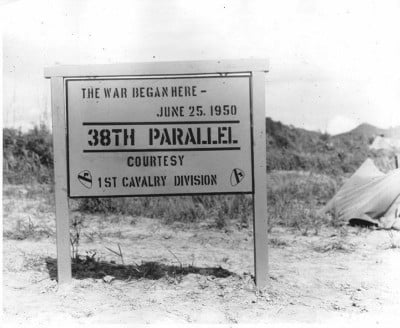

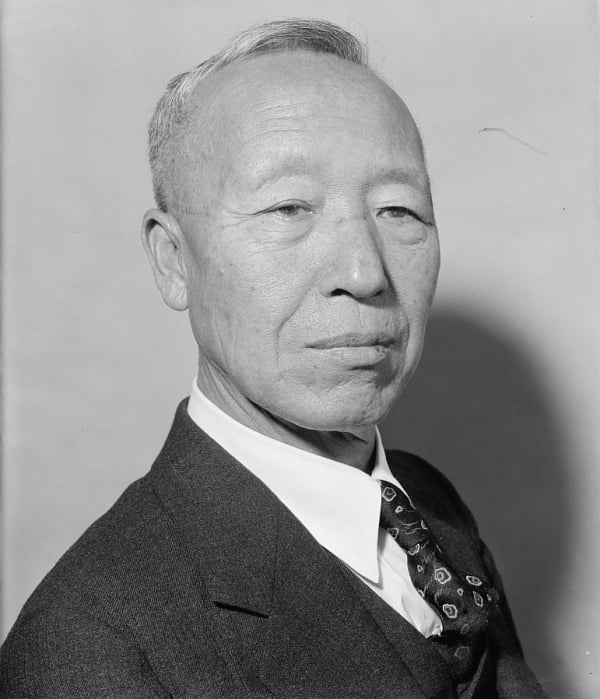
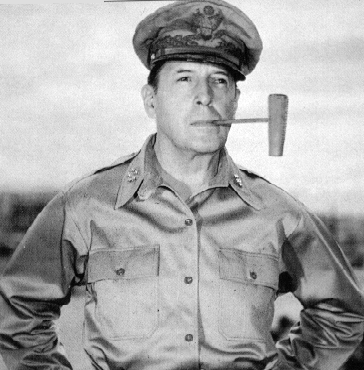

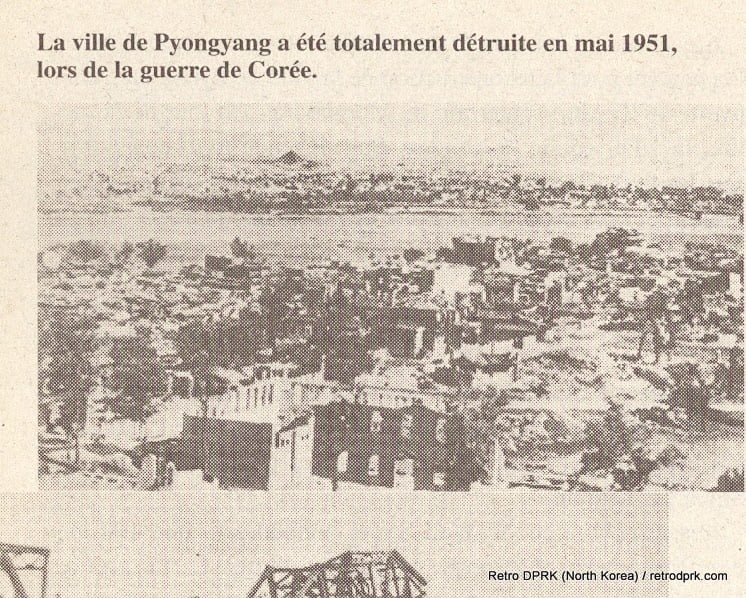
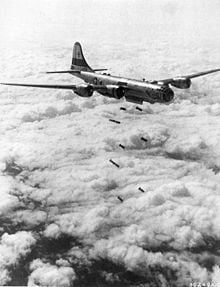
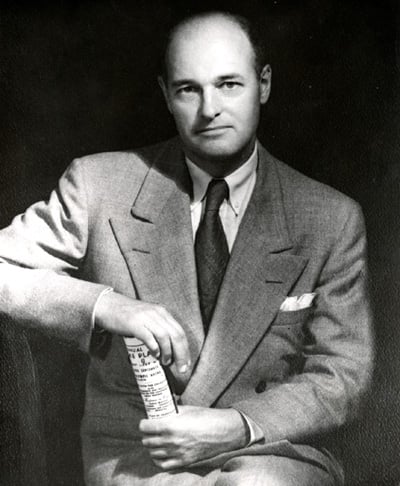
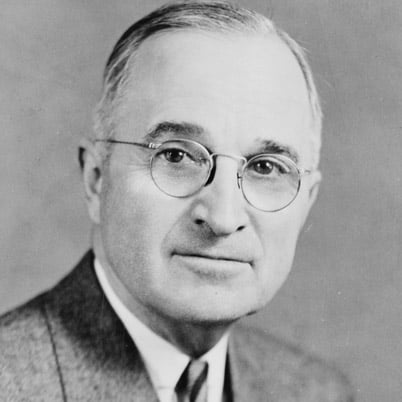
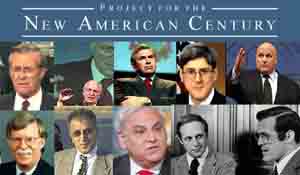
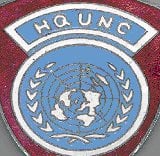
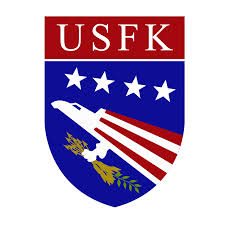
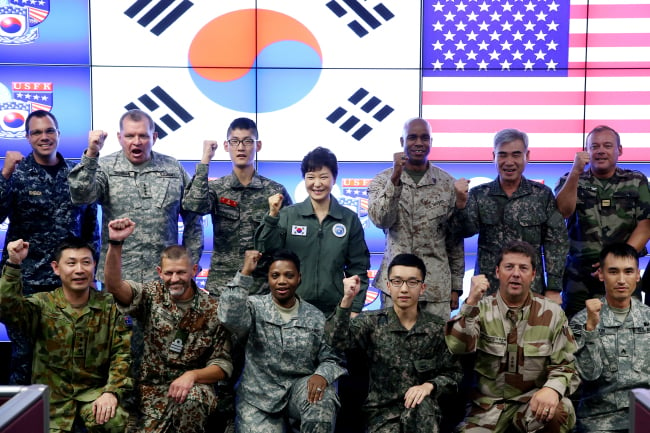

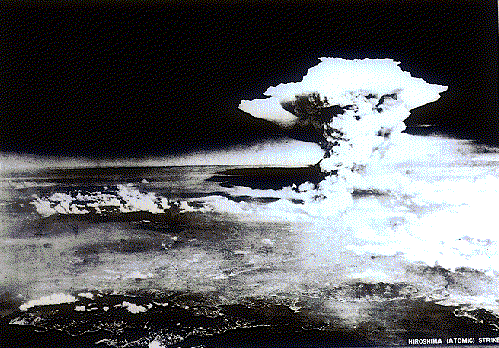
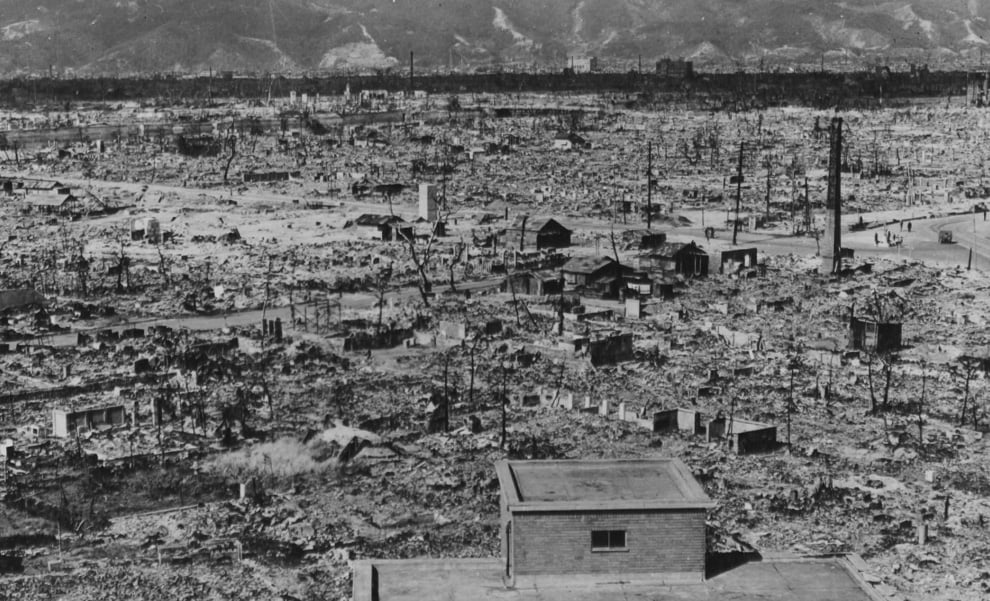
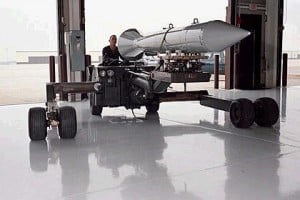
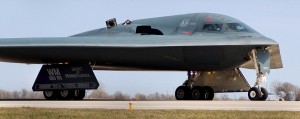
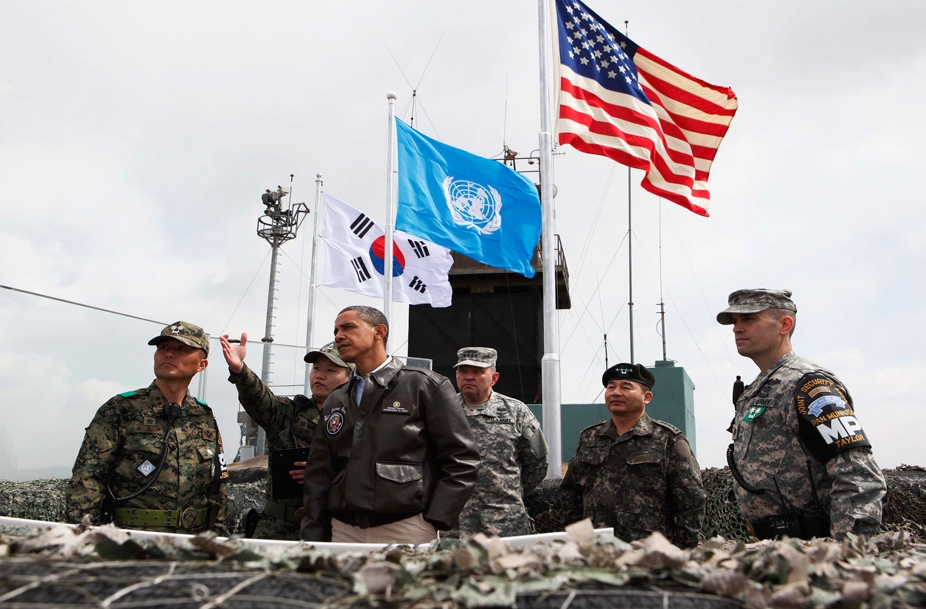



0 comments :